Barcoding News
Data tracking news, product updates, tips, and more
Beloit Memorial Hospital Improves Management of Bedside Medication with Bar Coding
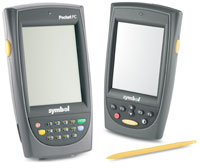 Challenge
Challenge
Beloit Memorial Hospital, a 175-bed community hospital in Beloit, Wisconsin decided to make patient safety a strategic priority after recent reports indicated that medical errors were increasing costs nationwide. The Institute of Medicine concluded that medical errors were a serious problem in the industry, and a study from the Joint Commission on the Accreditation of Healthcare Organizations (JCAHO) found that each incident involving an adverse drug event (ADE) costs hospitals an average of $2,000. About 40 percent of errors in prescribing medication are caught by the pharmacist or nurse before reaching the patient, but the hospital had no such “second check†for bedside administration of medication.
Solution
Beloit Memorial wanted to see if introducing technology tools at the point of care would reduce the risk for error. One possibility for streamlining the process for prescribing medication was computerized physician order entry (CPOE). But Beloit conducted demonstrations of CPOE products, and determined the technology did not meet the hospital’s needs: it wasn’t easy to use, and in fact added complexity to the process.
Aurora Relies on Zebra for High Quality Bar Codes at the Bedside
 Challenge: Reduce adverse drug events
Challenge: Reduce adverse drug events
In the wake of the 1999 Institute of Medicine study, “To Err Is Human,†Aurora Health Care wanted to consider the local implications. So management at the not-for-profit integrated delivery network, which is based in Milwaukee and includes 12 acute care hospitals, extrapolated the findings. To their surprise, they learned that medical errors were taking as many as 3.5 lives on an average day in Wisconsin.
So Aurora took action. Leadership began exploring how to further Aurora’s use of integrated electronic medical records across facilities in eastern Wisconsin to promote quality and protect patients. A core component of that initiative was to use bar coding to prevent and detect medication errors.
“Bar coding is part of a larger patient safety effort, but it’s a multi-stage project on its own,†says Robert Raschke, manager of electronic health record systems and information services at Aurora. “With bar coding and, eventually, CPOE [computerized physician order entry] in mind, we envisioned a closed-loop, integrated point-of-care medication administration system.â€
Solution: Part One – Labeling Pharmacy Medications
As the first phase toward realizing this vision, Aurora determined that the value of any bar coding effort would be directly proportional to the percentage of medications properly labeled. In fact, their goal is to label 100 percent of medications. This objective called for on-demand bar code printing in a wide variety of settings.While some smaller Aurora facilities might demand an average of 6,000 to 25,000 bar code labels per month, larger sites may need to print more than 50,000. Aurora needed printers that were appropriate to the volume demands of their varying sized hospitals. They also placed a priority on finding printers that would integrate smoothly with an existing pharmacy information system from Cerner.
Barcelona City Police choose Zebra RW 420 printers for processing fines and penalties
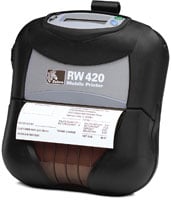 Barcelona City Police have adopted a new solution to speed up the bureaucratic processing of traffic fines. The benefits of implementing this new technology solution have been faster processing of traffic fines which can now be paid immediately via credit card. In addition data and information management has improved which has subsequently helped to reduce the amount of errors being made.
Barcelona City Police have adopted a new solution to speed up the bureaucratic processing of traffic fines. The benefits of implementing this new technology solution have been faster processing of traffic fines which can now be paid immediately via credit card. In addition data and information management has improved which has subsequently helped to reduce the amount of errors being made.
Barcelona City Council continues incorporating new technology to provide its local police force with more modern and efficient systems. In a recent project, the local police have started using a total of 330 PDAs and 150 Zebra RW 420 mobile printers.
The RW 420 mobile printer is connected to the PDA via Bluetooth® for printing fines and violations. The printer also contains a built in magnetic card and smart card reader which allows the user to log into the system using their identification card whilst also accepting credit card payments.
User friendly system
This new mobile technology solution allows more accurate data and information management by users, as the PDAs enable fast data entry and access to various tools and information. Users no longer have to carry bulky forms for fines and street maps. An added benefit is that the PDA software reduces the risk of errors in issuing fines as items such as street names are selected from drop-down menus, preventing the user from mis-typing or mis-spelling details
The new system also complies with new local legislation which came into effect in July 2006. It allows additional information to be added to the fine such as the loss of license or penalty points
Iceland Post improves deliveries with Zebra
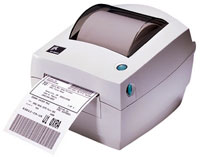 The Project
The Project
Previously Iceland Post had to manage a significant part of its post and parcel management manually. One of the main goals of the project was to make this process more efficient, while at the same time increase tracking abilities of deliveries, something that previously could only be done with registered mail. To become more customer-focused, the organization required a solution that automated certain work processes.
“Iceland Post had a solution which required manual stamping for postage and was only able to track registered mail. To become more proactive towards its customer needs, Iceland Post chose to strengthen its position on the market with the help of Zebra’s printing technology,†said Clive Fearn, Vertical Marketing Manager, Zebra Technologies Europe.
The organization’s previous solution made it hard for staff to do their job quickly and efficiently. The printers used for the ‘Post Assistant’ broke down regularly and only had a life expectancy of about two years.
The Solution
The Zebra applications chosen can be divided into three areas; sorting and distribution applications, applications in the post offices, and business post applications. Sorting and distribution applications include solutions for labeling of postbags, sorting trays, routing labels for local deliveries and shipping labels for parcels. Continue reading »
Motorola introduces Symbol MT2000 Series: MT2070 & MT2090 barcode scanner
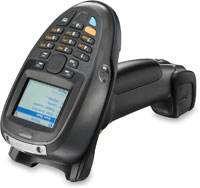 Combines the simplicity of a scanner and the brainpower of a mobile computer in an ultra-ergonomic gun-style form factor
Combines the simplicity of a scanner and the brainpower of a mobile computer in an ultra-ergonomic gun-style form factor
The Motorola MT2000 series of mobile terminals offer highly flexible device capable of streamlining many scan-intensive business processes in a wide variety of industries — from the front to back door in manufacturing plants, retail establishments, warehouses, hospitals and more. The easy-to-use and affordable mobile terminal offers a unique hybrid design, functioning as both a scanner and a mobile computer throughout the business day. Its rugged ergonomic design ensures reliability in almost any environment.
Both the MT2070 series and MT2090 series can be utilized right out of the box as a scanner — either tethered to a point of sale (POS), laptop or other computing system — or as a standalone wireless mobile computer capable of enabling inventory and other scan-intensive applications anywhere in the enterprise. The MT 2090 series also offers integrated 802.11 a/b/g for real-time direct application connectivity. The MT2000 series is available at an entry level price, making this addition a superior value with unmatched ROI.
Microscan QX Hawk previewed at ControlDesign.com
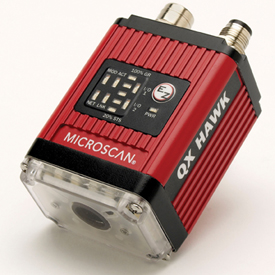 ControlDesign.com has an exclusive preview of Microscan‘s upcoming QX Hawk designed for high performance direct park mark reading.
ControlDesign.com has an exclusive preview of Microscan‘s upcoming QX Hawk designed for high performance direct park mark reading.
Selection of a proper code reader is critical to a track-and-trace system’s successful implementation. Microscan says its new QX Hawk is the first high-performance reader with the flexibility to read any mark at any distance and speed in any environment.
Continue reading: Microscan’s QX Hawk Code Reader Simplifies Track-and-Trace Implementation
Microscan will be introducing the QX HAWK, at the Assembly Technology Expo in Chicago on September 21-22, 2009.
Automated System Keeps Inventory Accurate and Updated
 Challenge:
Challenge:
A leading Grand Rapids, Michigan-based manufacturer of household cleaning machinery relied on a seven-person staff of full-time employees to manually enter hand-written inventory data. Every part placed into the warehouse and every finished product sent to the shipping dock was recorded on a transfer ticket and later entered into the company’s antiquated warehouse management system. In the hustle of this fast-paced consumer goods manufacturing environment, errors were common and the employees were spending more time entering data than moving product. The system was so inefficient and inaccurate, the company was forced to use three full-time dedicated counters to ensure that inventory levels were sufficient to meet production schedules.
To make the situation worse, the company did not record the locations of parts and finished products, causing pickers to waste time searching for goods in the warehouse.
“One person, the forklift driver, stocked supplies and finished goods within the warehouse,†said a manufacturing systems analyst. “If he was off for a day or on vacation, the entire system suffered because there was no physical or electronic record indicating where he put the stock.â€
Solution:
To synchronize the warehousing operations with the rest of the manufacturing operations, the company implemented a home-grown wireless network that incorporated a supply chain management solution with a data capture system. The system relies on bar coded labels and tags, printed on
Zebra® printers, to track the movement of goods into and out of the warehouse.
Portable Betting System is Winning Ticket
 Challenge:
Challenge:
Autotote, the nation’s leading supplier of pari-mutuel wagering systems to horse track, dog track, and off-track betting parlors, wanted to find a way to bring the betting window to its customers.
Solution:
A “walkabout†system was developed as an add-on to the existing teller network. Information sent from a handheld is read by the Tote network and sent back to the handheld.
Bar Code Labels Provide Inventory Accuracy Improvement To Cosmetics Manufacturer
 Challenge:
Challenge:
Bergen Brunswig, based in Orange, California, is the third-largest wholesale distributor of pharmaceutical and medical supplies in the United States. The distributor needed shipping software that could fit the needs of its new direct-to-consumer fulfillment service to various on-line drug stores, run on the company’s AS/400, and be easily integrated with its primary distribution system, ASW by IBS. The company also needed to integrate electronic scales and bar code printers to allow for package labeling and tracking.
Solution:
Bergen Brunswig met its Internet Fulfillment Center’s shipping system requirements through Pfastship-2000 software, produced and installed by Pfastship Worldwide Logistics Inc., an IBM Business Partner. The software integrates seamlessly with the IBS system, electronic scales, and thermal, on-demand barcode printers from Zebra Technologies.
Enable Increased Productivity and Efficiency With GPS Capability in Industrial Mobile Computing Solutions
 Chances are, you’re familiar with consumer GPS navigation systems built into many new vehicles at the factory—and widely available in the aftermarket. Such systems offer capabilities beyond basic navigation, which often include points of interest, real-time traffic reports, and speed-limit notification—just what you might want for a business trip or a family vacation. However, when GPS technology is built into mobile computers, it can offer the same familiar navigation, configured to meet business requirements—plus support additional productivity-enhancing applications.
Chances are, you’re familiar with consumer GPS navigation systems built into many new vehicles at the factory—and widely available in the aftermarket. Such systems offer capabilities beyond basic navigation, which often include points of interest, real-time traffic reports, and speed-limit notification—just what you might want for a business trip or a family vacation. However, when GPS technology is built into mobile computers, it can offer the same familiar navigation, configured to meet business requirements—plus support additional productivity-enhancing applications.
What you’ll learn
- How GPS works.
- Specific uses for GPS to enhance transportation, logistics and field service operations.
- How GPS can operate in synergy with other technologies to enhance productivity and efficiency for mobile operations.
- Industrial mobile computer attributes critical to matching the requirements of GPS applications.




